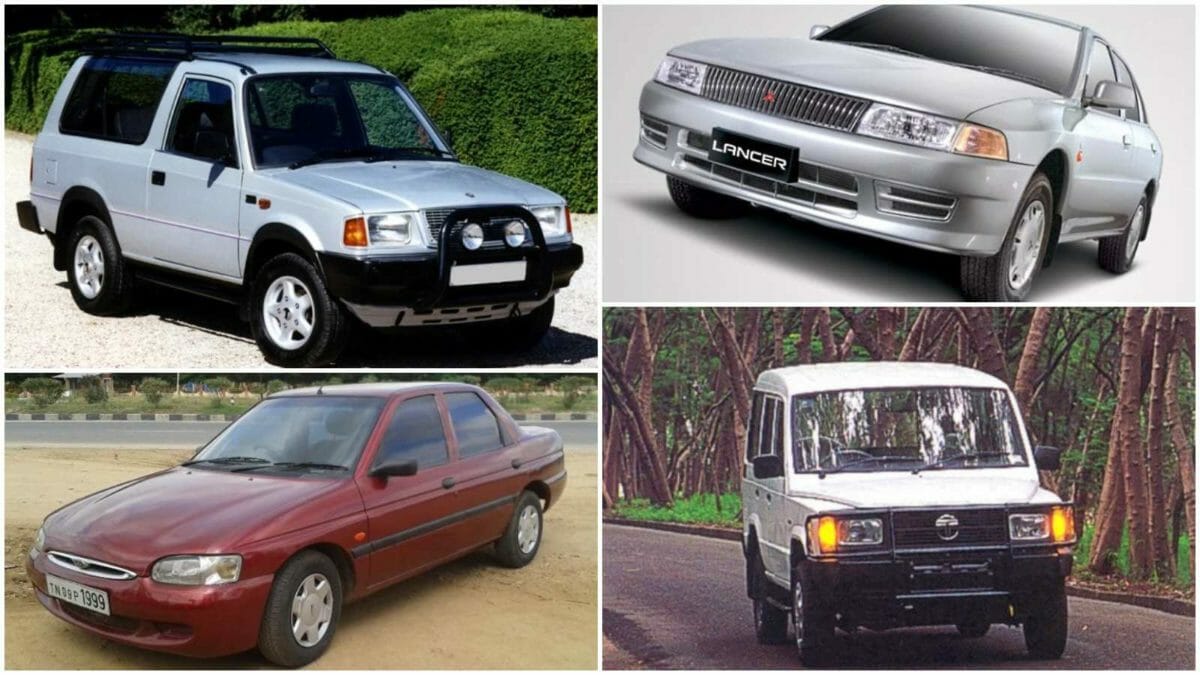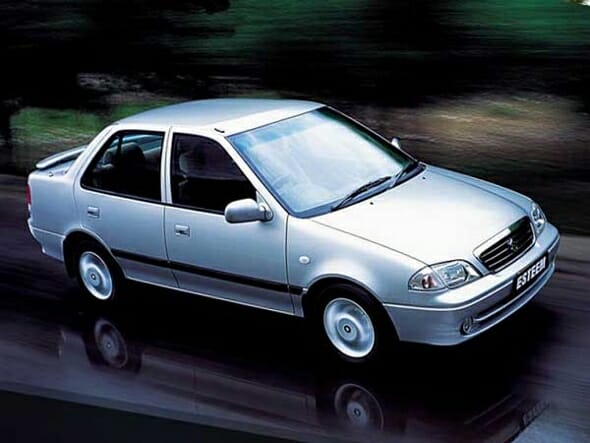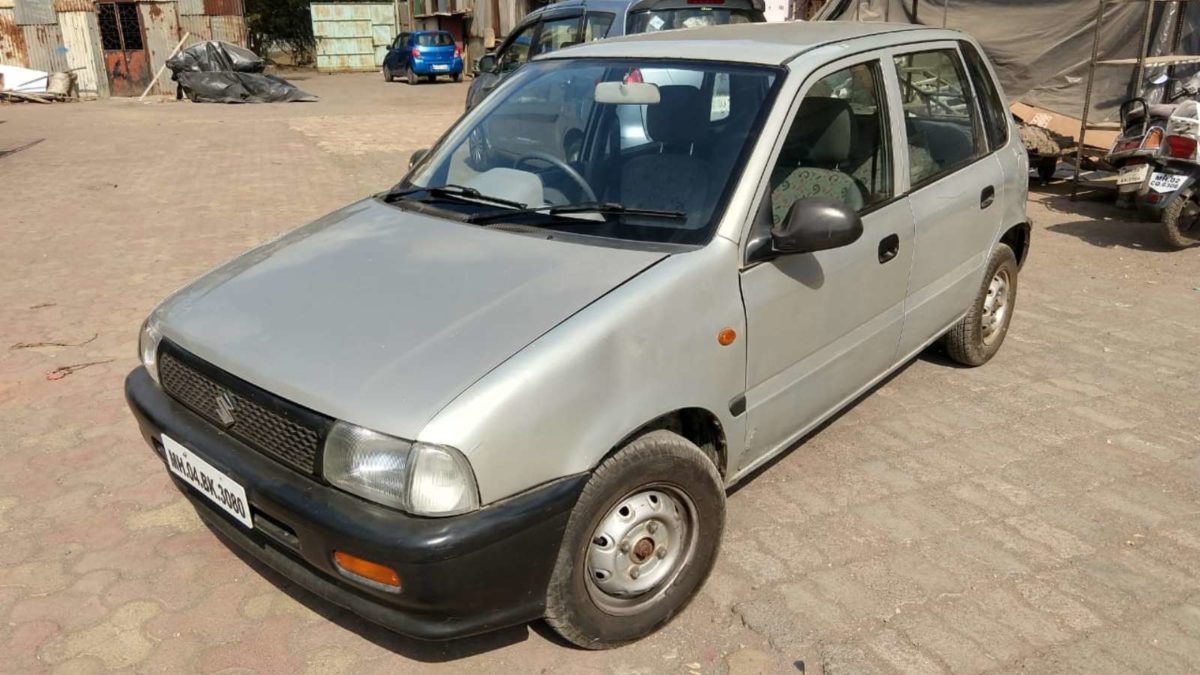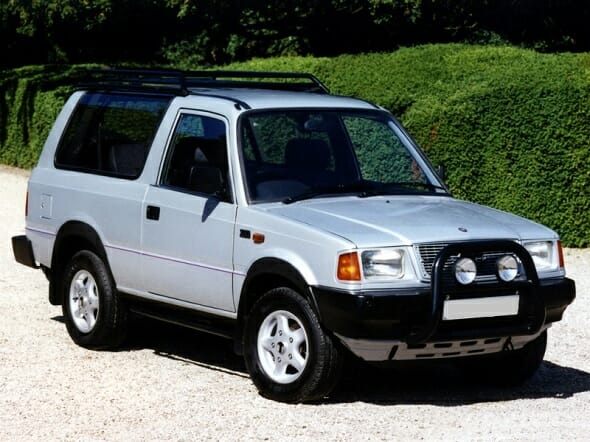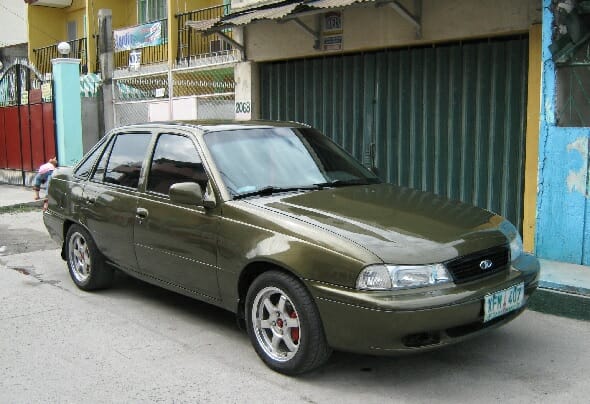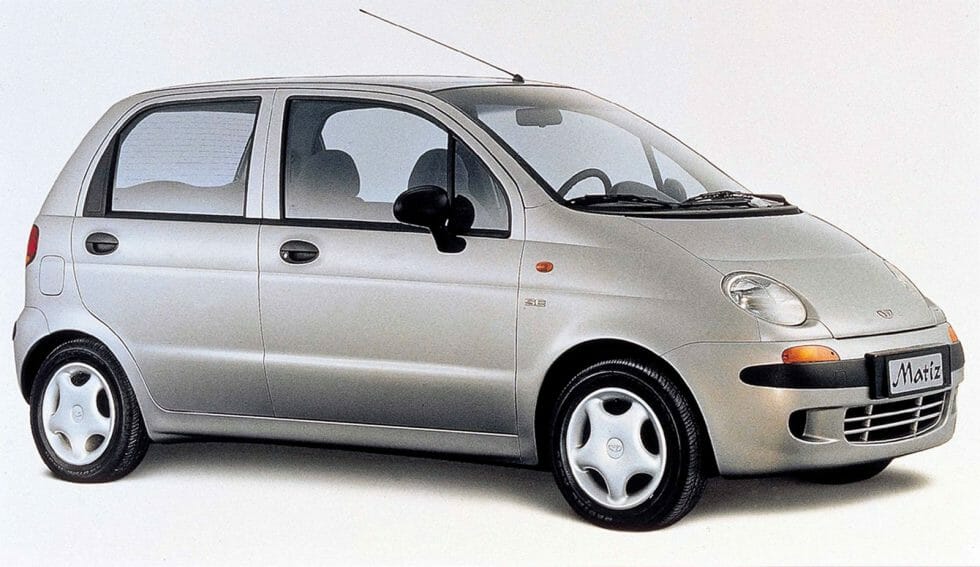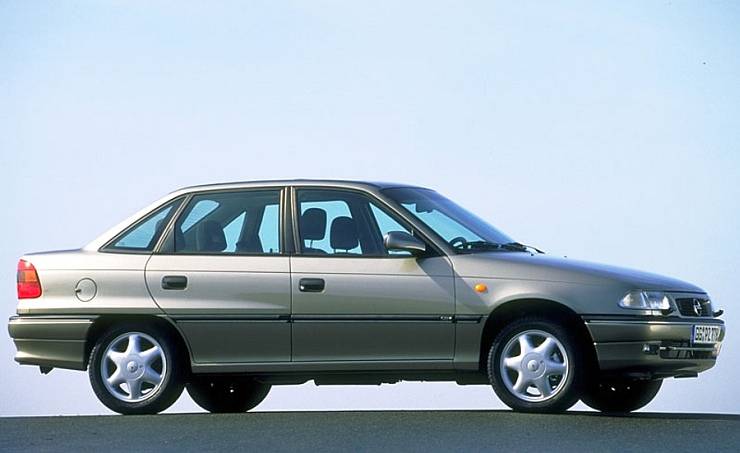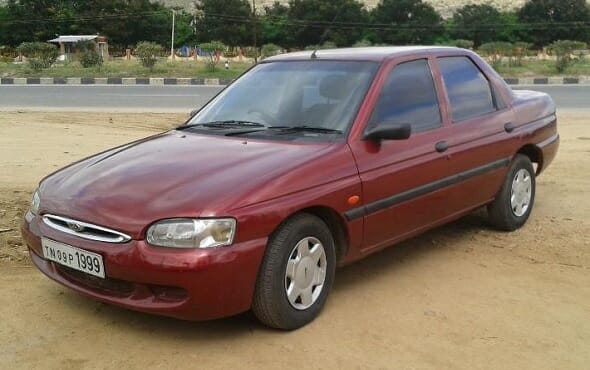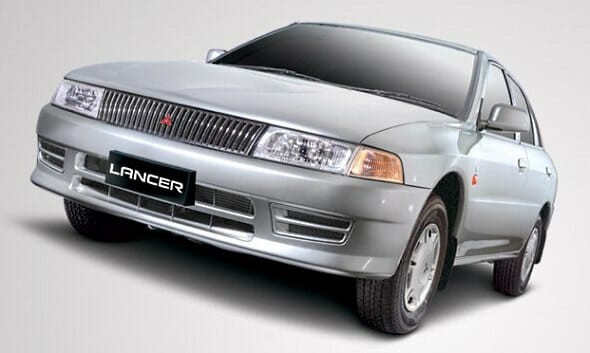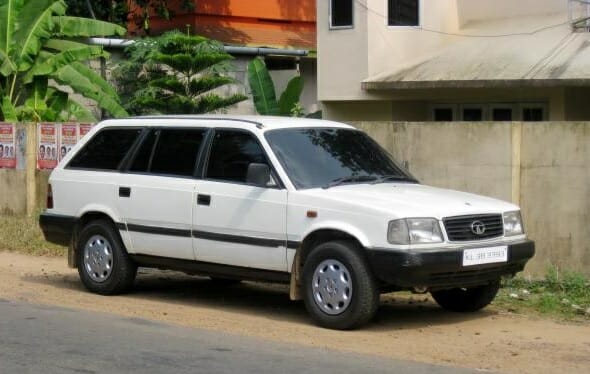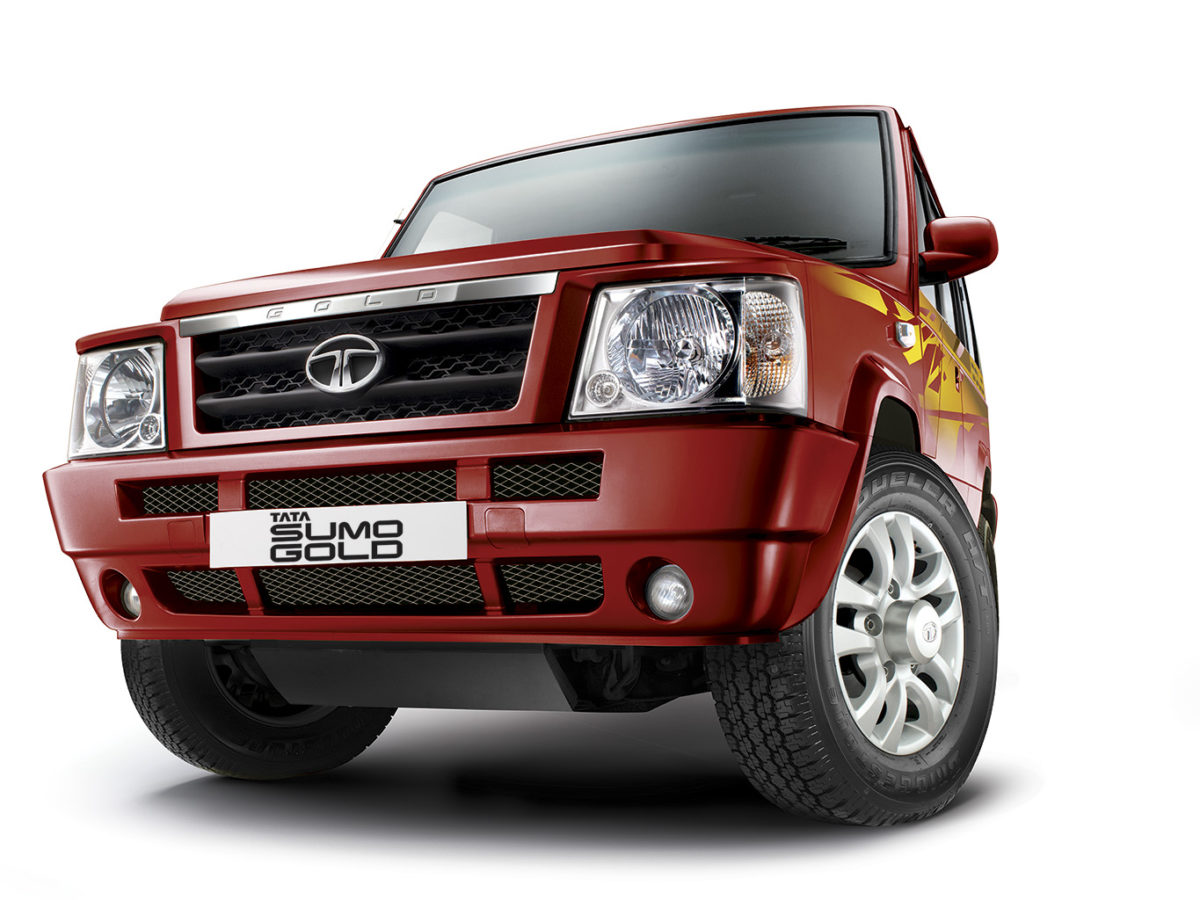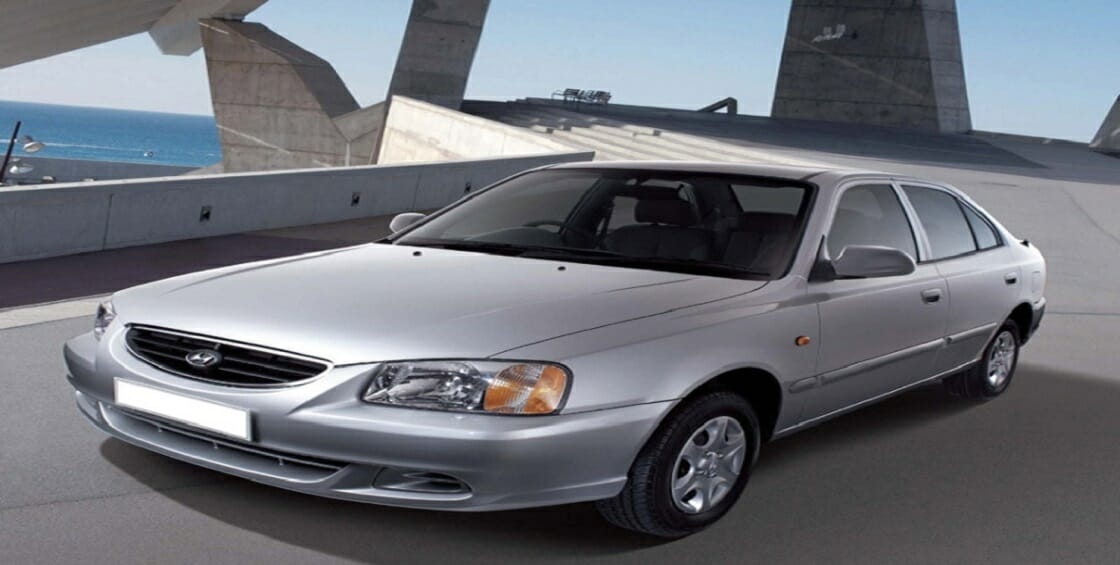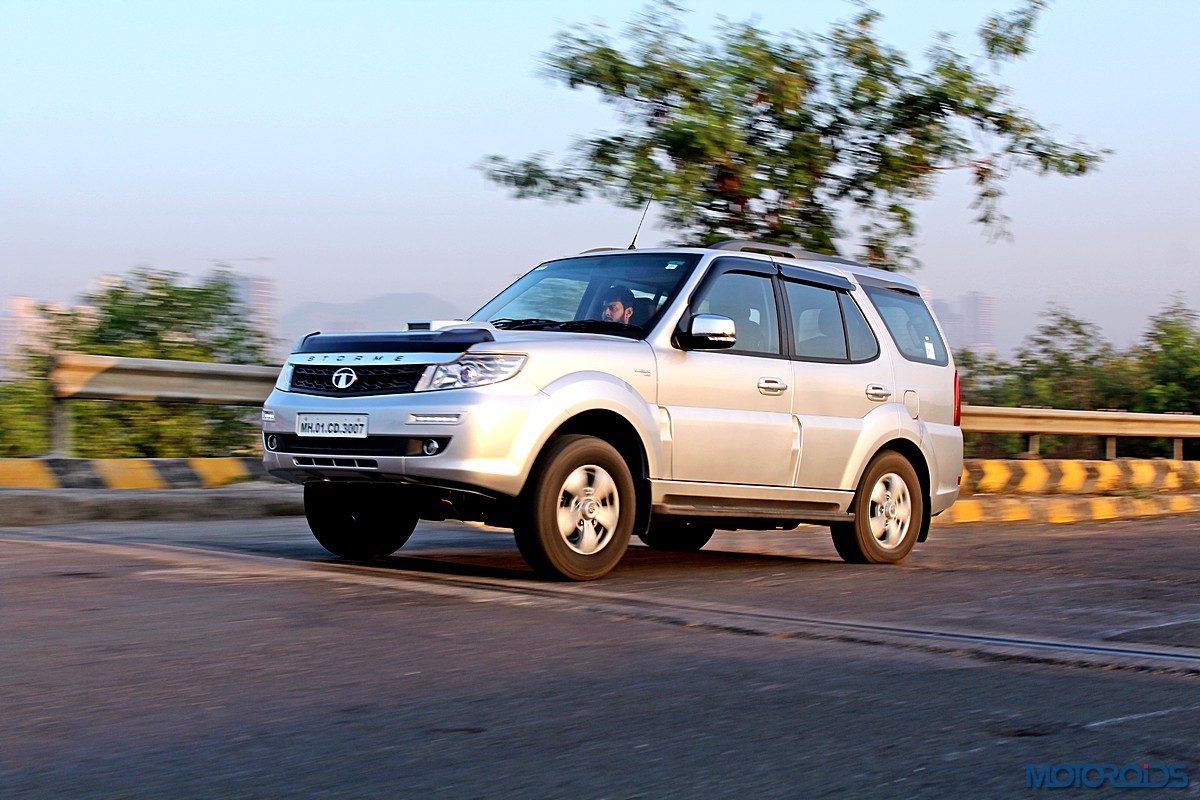Whenever people think of the 90s, they tend to become nostalgic. Be it sporting events, films, serials or even consumer goods. So what about cars then? Surely, there were many which make us remember our younger days. Cars like the Maruti 800 and Omni were most popular during those times as it fit the budget and purpose of an Indian middle-class family. But there were some others too which left a lasting impression on everybody’s mind. In this article, we look at some of the cars which debuted in the market in the 90s and were an instant hit.
Maruti 1000 (1990) / Maruti Esteem(1993)
The Maruti 1000 was the first sedan of the 1990s. A successor to the popular 800, this car was Bollywood’s cheat sheet to all the racing cars. The Maruti 1000 was a sedan version of the Suzuki Swift / Cultus, and it instantly caught the attention of the buyers. It was powered by a 1-litre, 4 cylinder petrol engine that put out a mere 45 bhp of power. But the car could easily cross the 120 km/h mark on the speedometer which was a big thing for those times.
It was later revamped and renamed as the Esteem in 1993. The engine configuration changed with the introduction of a 1.3 litre 4-cylinder petrol engine which cranked out 60 bhp of power (in a carburetted form). The Esteem remained the most popular sedan through the 90s due to its affordability and refreshing design which made it look more relevant. For the longest time, it served as the go-to vehicle for rallyists, budding racers and grease monkeys.
Maruti Zen (1993)
The 2nd hatchback from Maruti, the Zen sold like hot pancakes at the time of its launch. The jellybean shape paired with a nippy 993 cc four-cylinder engine helped it to earn the tag of being called the Mini Cooper of India. It was quick, light and easy to drive on congested Indian roads.
Tata Sierra (1991)
Anyone who has watched the popular TV show ‘CID’ in its early days can understand why this SUV was so popular during those days. This was one of the most stylish vehicles we saw on the roads in the 90s. Also, it was one of the rare cars to offer power windows at that time and 4WD for export markets. No wonder its modern concept form gained so much popularity at the 2020 Auto Expo.
The Tata Sierra, based on the Tata 207 / Tata Mobile platform, was a butch looking SUV with only three doors, but with seats for 5. It was also the first Indian vehicle to be designed and produced locally. It was powered by a 1998 cc, four-cylinder diesel engine that put out 68 bhp of power, paired with a five-speed manual transmission. Later in its life, it got a turbocharged engine and a four-wheel-drive option as well before Tata pulled the plug on it in 2000.
Daewoo Cielo (1995)
The Cielo from South Korean manufacturer Daewoo was the first real competitor to the Maruti Esteem. Priced at just about the same levels as the Maruti Esteem, it offered far more value for money with its spacious interiors and luxurious features which made it quite popular back then. It was powered by a 1.5-litre guzzler which cranked out 75 bhp of power, making it one of the most powerful sedans of its time. An improved version called followed the Cielo, but there were better options available by that time
Daewoo Matiz (1999)
The Daewoo Matiz was the second offering from Daewoo that came out in 1999. It was known as the “cute, little car” which was perfect for a small family. It put out 52PS of power from a three-cylinder, 800 cc engine with a five-speed manual transmission. It was fuel-efficient and some still consider it as a better prospect than the Santro that came along, almost at the same time
Opel Astra (1996)
General Motors’ first offering in India, the Opel Astra was one of the fanciest and good looking cars back then. The Astra was launched in 1996 and came with a 1.6 petrol engine and single-point fuel injection. The car put out a modest 76 bhp of power, which was later upgraded in 1997. It had well-done interiors and a feature-packed cabin. Power mirrors, windows, power steering, central locking were all standard features which were very uncommon those days.
Ford Escort (1996)
By this time, the Maruti Esteem had been popular for quite a while and the introduction of the Cielo made manufacturers realise the potential of this segment in India. Ford entered India to the launch its first car, a large sedan, in the form of the Ford Escort. The Escort was a pretty spacious car with a large boot and comfortable rear seat. It came with all the creature comforts – powered mirrors, power steering, music system, air conditioning and front power windows.
The Escort was offered with two engine – a 1.3-litre push-rod petrol engine that was not too powerful and the more powerful and popular choice of a 1.8-litre diesel engine. It wasn’t the perfect vehicle, yet, people who owned one for long have good memories with the car.
Mitsubishi Lancer (1997)
The first car that the HM-Mitsubishi joint venture launched in India was the Lancer. It gained a large number of customers due to its sporty appearance which was not common during that decade. It was powered by a 1.5-litre petrol engine that pumped out 86 bhp of power and later a diesel engine was also offered.
The car filled the gap between sports and luxury. With its DNA based on the legendary EVO, the Lancer was by far one of the most desirable cars around. Its chassis was really capable and those who drove it swore by the ride and handling qualities. Like the Esteem, the Lancer too was a popular car in the Indian rallying scene.
Tata Estate (1992)
Tata quickly followed up the Sierra SUV with a station-wagon – the Tata Estate. It was also based on the Tata 207 platform, had five doors, air conditioning, power steering, power windows and central locking. Just like the other Tata vehicles which were quirky, the Estate was ahead of its time and had many features, no other Indian car offered at that time. Based on the T- Series Mercedes Benz station wagon. it was also powered by the 1998 cc diesel engine from the Sierra. Although ahead of its time, it had a fairly short stint in the market and was rolled out between 1992 and 2000.
Tata Sumo (1994)
Upon its launch, the Tata Sumo was a huge hit across the country, in semi-urban and rural areas alike. It was the first true modern passenger vehicle in every sense. It was powered by the same 2-litre diesel engine as the Tata Sierra and Estate but had incredibly spacious interiors which offered space for as many as 9 people. The flat panels and the squared-off body was reminiscent of Mercedes’ G-Wagon styling.
After over two decades of undisputed reign on the roads and three-generation changes, the Sumo (Gold in its last generation) was discontinued in 2017 ahead of the BS4 emission norms.
Hyundai Accent (1999)
The Accent was the first sedan to be offered by Hyundai Motors India. It became extremely popular in its segment and stayed on the market longer than the Esteem. The first Accent was powered by a 1.5-litre petrol engine that put out a very impressive 92 bhp of power – much more than the Maruti Esteem. It was well known for its sportiness and feature-loaded cabin. Hyundai offered Air-conditioning and power steering as standard across all its variants.
The Accent was later given a generation update and renamed as ‘Xcent’ which is still popular and relevant in the compact sedan segment.
Tata Safari (1998)
The Tata Safari has not only been the most loved SUV from Tata to date, but it has also been one of the most popular SUVs in India since the end of the 20th century. It was India’s first truly affordable luxury SUV. The first Safari came with a 1998 cc diesel engine with a turbocharger, putting out 90PS of power, paired with a five-speed manual transmission with a four-wheel-drive option. The Safari ruled the streets for almost 22 years until it was discontinued recently after the company decided to not upgrade its engine to BS6 emission standards which left many fans of this iconic SUV dejected.

